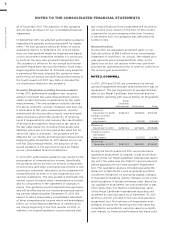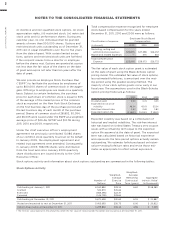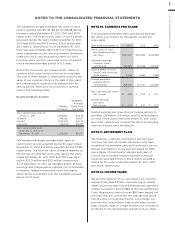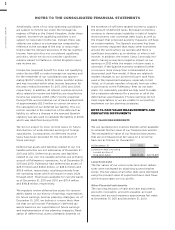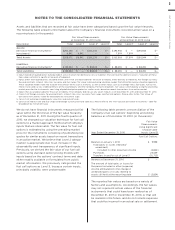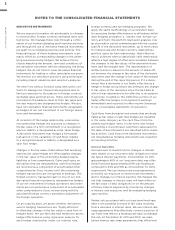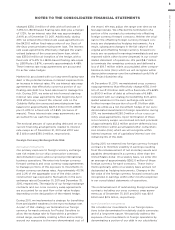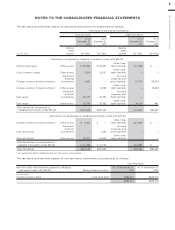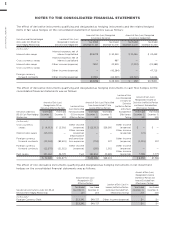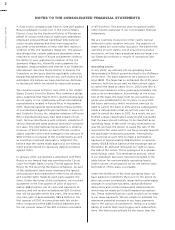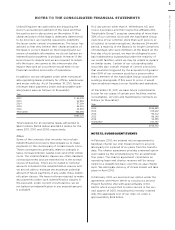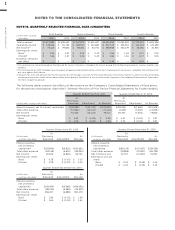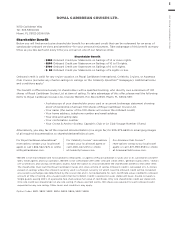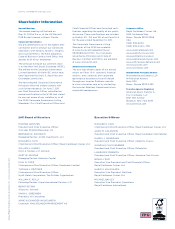Royal Caribbean Cruise Lines 2011 Annual Report Download - page 90
Download and view the complete annual report
Please find page 90 of the 2011 Royal Caribbean Cruise Lines annual report below. You can navigate through the pages in the report by either clicking on the pages listed below, or by using the keyword search tool below to find specific information within the annual report.
2011 ANNUAL REPORT 86
NOTES TO THE CONSOLIDATED FINANCIAL STATEMENTS
DERIVATIVE INSTRUMENTS
We are exposed to market risk attributable to changes
in interest rates, foreign currency exchange rates and
fuel prices. We manage these risks through a combi-
nation of our normal operating and financing activities
and through the use of derivative financial instruments
pursuant to our hedging practices and policies. The
financial impact of these hedging instruments is pri-
marily offset by corresponding changes in the under-
lying exposures being hedged. We achieve this by
closely matching the amount, term and conditions of
the derivative instrument with the underlying risk being
hedged. We do not hold or issue derivative financial
instruments for trading or other speculative purposes.
We monitor our derivative positions using techniques
including market valuations and sensitivity analyses.
We enter into various forward, swap and option con-
tracts to manage our interest rate exposure and to
limit our exposure to fluctuations in foreign currency
exchange rates and fuel prices. These instruments are
recorded on the balance sheet at their fair value and
the vast majority are designated as hedges. We also
have non-derivative financial instruments designated
as hedges of our net investment in our foreign opera-
tions and investments.
At inception of the hedge relationship, a derivative
instrument that hedges the exposure to changes in
the fair value of a firm commitment or a recognized
asset or liability is designated as a fair value hedge.
A derivative instrument that hedges a forecasted
transaction or the variability of cash flows related
to a recognized asset or liability is designated as a
cash flow hedge.
Changes in the fair value of derivatives that are desig-
nated as fair value hedges are offset against changes
in the fair value of the underlying hedged assets,
liabilities or firm commitments. Gains and losses on
derivatives that are designated as cash flow hedges
are recorded as a component of accumulated other
comprehensive (loss) income until the underlying
hedged transactions are recognized in earnings. The
foreign currency transaction gain or loss of our non-
derivative financial instruments designated as hedges
of our net investment in foreign operations and invest-
ments are recognized as a component of accumulated
other comprehensive (loss) income along with the
associated foreign currency translation adjustment of
the foreign operation.
On an ongoing basis, we assess whether derivatives
used in hedging transactions are “highly effective”
in offsetting changes in the fair value or cash flow of
hedged items. We use the long-haul method to assess
hedge effectiveness using regression analysis for
each hedge relationship under our interest rate,
foreign currency and fuel hedging programs. We
apply the same methodology on a consistent basis
for assessing hedge effectiveness to all hedges within
each hedging program (i.e., interest rate, foreign cur-
rency and fuel). We perform regression analyses over
an observation period commensurate with the contrac-
tual life of the derivative instrument, up to three years
for interest rate and foreign currency relationships
and four years for fuel relationships. High effective-
ness is achieved when a statistically valid relationship
reflects a high degree of offset and correlation between
the changes in the fair values of the derivative instru-
ment and the hedged item. The determination of
ineffectiveness is based on the amount of dollar off-
set between the change in fair value of the derivative
instrument and the change in fair value of the hedged
item at the end of the reporting period. If it is deter-
mined that a derivative is not highly effective as a
hedge or hedge accounting is discontinued, any change
in fair value of the derivative since the last date at
which it was determined to be effective is recognized
in earnings. In addition, the ineffective portion of our
highly effective hedges is recognized in earnings
immediately and reported in other income (expense)
in our consolidated statements of operations.
Cash flows from derivative instruments that are desig-
nated as fair value or cash flow hedges are classified
in the same category as the cash flows from the
underlying hedged items. In the event that hedge
accounting is discontinued, cash flows subsequent to
the date of discontinuance are classified within invest-
ing activities. Cash flows from derivative instruments
not designated as hedging instruments are classified
as investing activities.
Interest Rate Risk
Our exposure to market risk for changes in interest
rates relates to our long-term debt obligations includ-
ing future interest payments. At December 31, 2011,
approximately 40% of our long-term debt was effec-
tively fixed and approximately 60% was floating as
compared to 49% and 51% as of December 31, 2010,
respectively. We use interest rate swap agreements
to modify our exposure to interest rate movements
and to manage our interest expense. We manage the
risk that changes in interest rates will have either on
the fair value of debt obligations or on the amount
of future interest payments by monitoring changes
in interest rate exposures and by evaluating hedging
opportunities.
Market risk associated with our long-term fixed-rate
debt is the potential increase in fair value resulting
from a decrease in interest rates. We use interest rate
swap agreements that effectively convert a portion of
our fixed-rate debt to a floating-rate basis to manage
this risk. At December 31, 2011 and 2010, we main-
tained interest rate swap agreements that effectively


